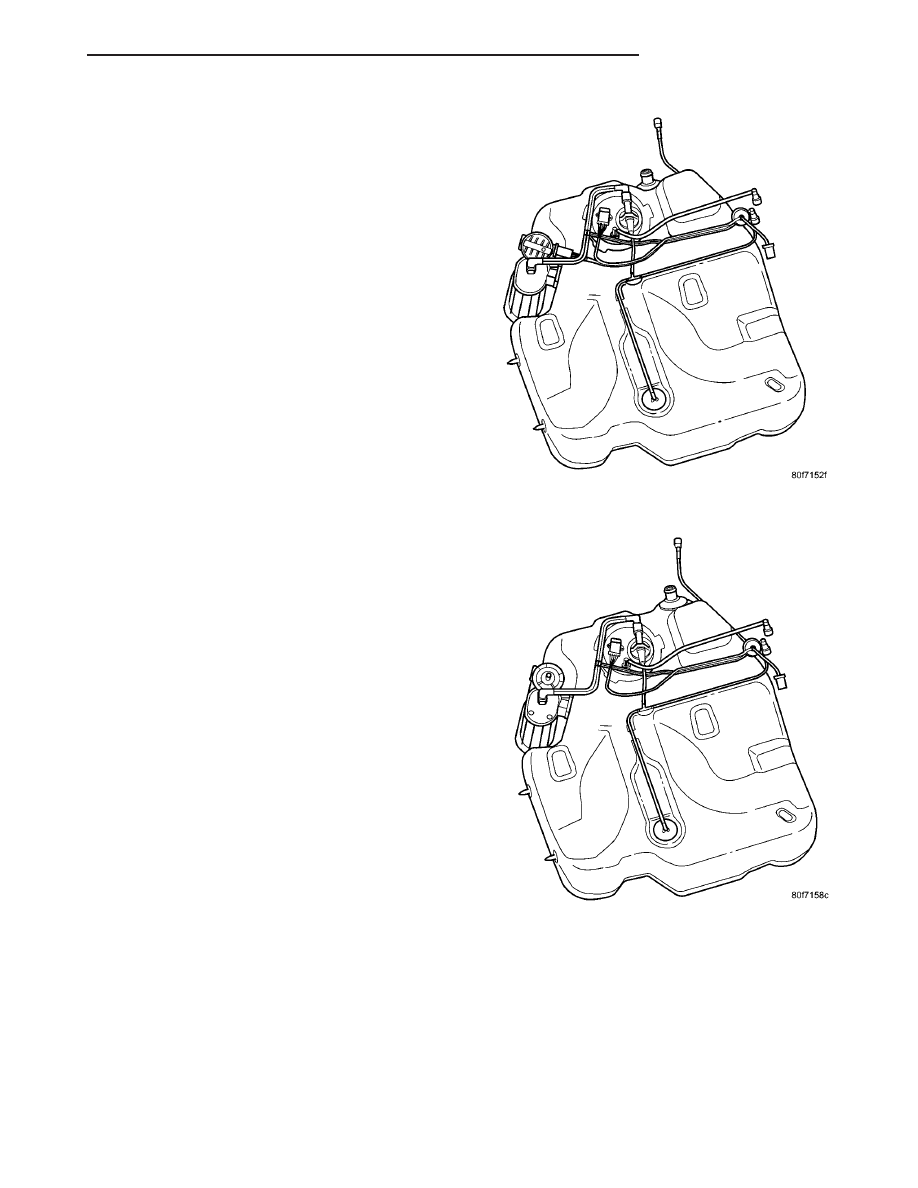Chrysler Sebring, Stratus sedan, Sebring Convertible. Manual - part 543

(7) Install fuel rail support bracket and loosely
install all bolts (Fig. 10).
(8) Tighten three fasteners to intake manifold to
28.3 N·m (250 in. lbs.) torque.
(9) Tighten two bolts to fuel rail to 8.5 N·m (75 in.
lbs.) torque.
(10) Install wiring harness to brackets (Fig. 11).
(11) Connect the throttle and speed control cables
to fuel rail bracket (Fig. 12).
(12) Connect negative battery cable.
(13) Use the DRBIII
t scan tool to pressurize the
fuel system. Check for leaks.
INSTALLATION - 2.7L
(1) Lightly lubricate the fuel injector O-rings with
a couple drops of clean engine oil.
(2) Install retaining clips on fuel injectors.
(3) Push injectors into fuel injector rail until clips
are in the correct position.
(4) Position fuel rail over cylinder heads, and push
rail into place. Tighten fuel rail mounting bolts to
11.9 N·m (105 in. lbs.) torque.
(5) Connect the fuel supply tube quick connect fit-
ting to the fuel rail. Refer to Quick Connect Fittings
in the Fuel Delivery Section.
(6) Connect the electrical connectors to the fuel
injectors.
(7) Install intake manifold plenum. Refer to the
Engine section for information.
(8) Connect negative cable to battery.
FUEL TANK
DESCRIPTION
The fuel tank is constructed of a plastic material.
Its main functions are for fuel storage and for place-
ment of the fuel pump module. The tank is made
from High density Polyethylene (HDPE) material. If
equipped with ORVR (Onboard Refueling Vapor
Recovery) it has been added to the fuel tank to con-
trol refueling vapor emissions.
The PZEV (Partial Zero Emission Vehicle) fuel
tank is a steel tank with the check valves, and hoses
inside of the tank. This system uses the NVLD (Nat-
ural Vacuum Leak Detection) system for leak detec-
tion for both plastic and steel tanks.
OPERATION
All models pass a full 360 degree rollover test
without fuel leakage. To accomplish this, fuel and
vapor flow controls are required for all fuel tank con-
nections.
All models are equipped with either one or two
check valves mounted into the top of the fuel tank (or
pump module). On the PZEV system the check valves
are inside of the fuel tank. The valves are non-ser-
viceable parts.
NVLD FUEL TANK
NON US FUEL TANK
JR
FUEL DELIVERY
14 - 9
FUEL RAIL (Continued)